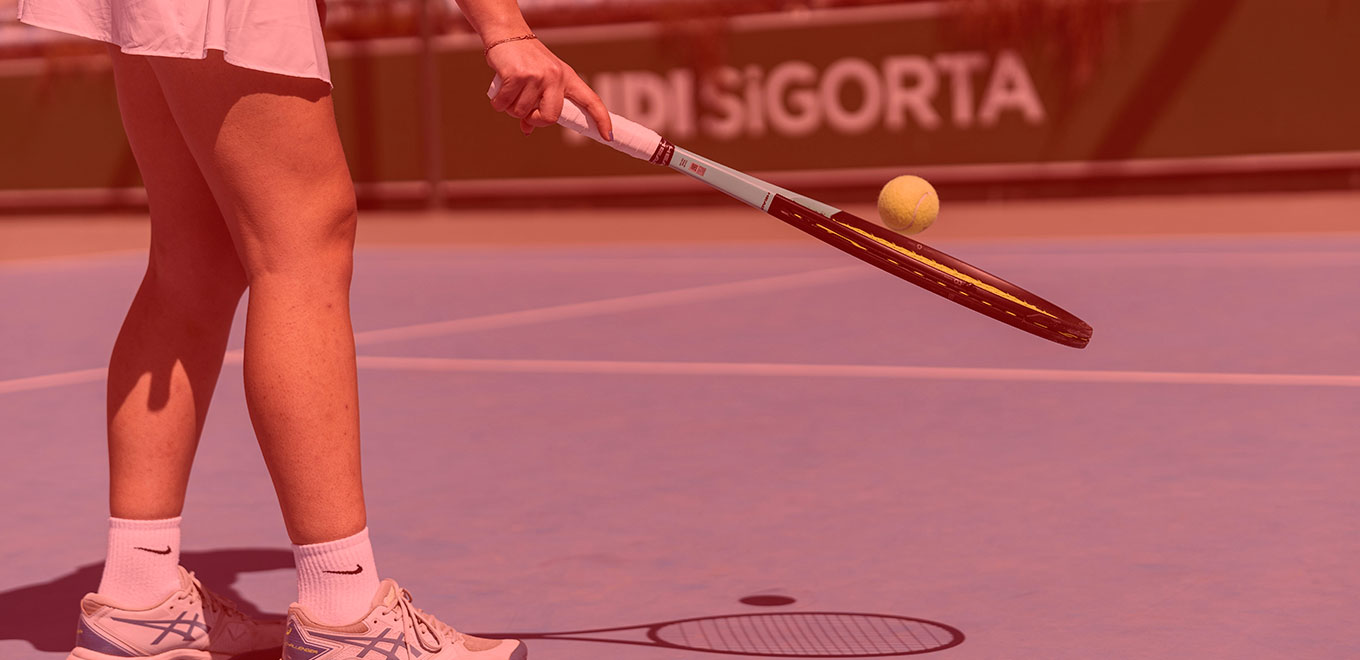Tennis is a thrilling sport—and one of the few with a relatively balanced level of competition between men and women. And as we all know, understanding history is essential to grasp the present.
That’s why we’ve put together a list of who we consider to be some of the greatest female tennis players of all time. This ranking will help you put the elite level of the women’s circuit into perspective—long before many fans even realized how competitive it truly was. It’s valuable context when analyzing tennis predictions on SpartaBet!
1. Margaret Court
Key Achievements: 24 Grand Slam singles titles · 64 Grand Slam titles in total (singles, doubles, mixed)
Margaret Court holds the record for the most Grand Slam singles titles in tennis history, with a total of 24. Only Novak Djokovic has matched that number. Rafael Nadal retired with 22 and Roger Federer with 20.
But that’s not all—Court also claimed 19 women’s doubles titles and 21 mixed doubles titles, for a staggering 64 Grand Slam titles in total.
Her dominance on court and versatility across all disciplines made her one of the sport’s most iconic figures throughout the 1960s and 1970s. We can only imagine what Davis Cup predictions would look like if she were still active!
2. Serena Williams
Key Achievements: 23 Grand Slam singles titles · 14 Grand Slam doubles titles
Serena Williams won 23 Grand Slam singles titles, just one short of tying the all-time record. She also collected 14 Grand Slam doubles titles alongside her sister Venus.
With power as her signature and a bold, unforgettable presence, she became one of the most dominant players of her generation—and a global icon.
3. Steffi Graf
Key Achievements: 22 Grand Slam singles titles · Only player to achieve a ‘Golden Slam’ (1988)
Steffi Graf is the only tennis player to achieve the legendary “Golden Slam”—winning all four Grand Slam tournaments and Olympic gold in the same calendar year (1988).
She won 22 Grand Slam singles titles, all between the late 1980s and late 1990s, thanks to her aggressive playstyle and remarkable adaptability across surfaces.
4. Martina Hingis
Key Achievements: 5 Grand Slam singles titles · Youngest-ever world No.1 in Open Era (at age 16)
The Swiss-Slovakian tennis prodigy won five Grand Slam singles titles and became the youngest world No. 1 in the Open Era, reaching the top spot at just 16 years old.
Her court intelligence and extraordinary skillset allowed her to thrive even against physically stronger opponents.
5. Billie Jean King
Key Achievements: 12 Grand Slam singles titles · Founder of the WTA · Gender equality advocate
The woman who lends her name to today’s Billie Jean King Cup won 12 Grand Slam singles titles and was one of the founders of the Women’s Tennis Association (WTA) in 1973. She also became a vocal advocate for gender equality in sports.
Her most iconic moment? Winning the “Battle of the Sexes” against Bobby Riggs in 1973—a match that helped shift the spotlight to women’s tennis and inspired a new era of growth.
6. Chris Evert
Key Achievements: 18 Grand Slam singles titles · 7-time French Open champion · Reached at least semifinals in 52 of 56 Grand Slams
This American star claimed 18 Grand Slam singles titles, including a record seven at Roland Garros, surpassing none other than Suzanne Lenglen, the namesake of the French Open women’s trophy.
Her consistency was astonishing: she reached at least the semifinals in 52 of the 56 Grand Slam events she entered between the 1970s and 1980s. She was ranked world No. 1 for 260 weeks and maintained a legendary rivalry with another player on this list: Martina Navratilova.
7. Venus Williams
Key Achievements: 7 Grand Slam singles titles · 14 Grand Slam doubles titles · Olympic gold medals in singles and doubles
Of course, if we mention Serena, we can’t leave out Venus Williams. Though she won seven Grand Slam singles titles, fewer than her sister, Venus is regarded as one of the standout athletes of her era.
Her powerful serve and fearless net play revolutionized women’s tennis. Alongside Serena, she also won 14 Grand Slam doubles titles, and she’s been a leading voice for equal pay in sports.
8. Monica Seles
Key Achievements: 9 Grand Slam singles titles (before age 20) · 3-time French Open champion
If you thought Hingis reaching No. 1 at 16 was impressive, consider this: Monica Seles won nine Grand Slam singles titles before turning 20, including three consecutive French Open titles (1990–1992).
Her explosive, two-handed strokes on both sides made her seem unstoppable—until a tragic incident interrupted her career. She was stabbed during a match in Hamburg in 1993, a shocking attack that sidelined her during her prime. Yet, she returned to compete again, showing remarkable resilience.
9. Martina Navratilova
Key Achievements: 18 Grand Slam singles titles · 31 doubles and 10 mixed doubles Grand Slam titles · 332 weeks as world No.1
Martina Navratilova is widely considered one of the greatest tennis players of all time. She earned 18 Grand Slam singles titles and held the world No. 1 ranking for a record 332 weeks.
She also won 31 Grand Slam doubles titles and 10 in mixed doubles, cementing her legacy as one of the most complete players in tennis history. Remarkably, she even returned to the sport at age 43, six years after retiring—a true symbol of dedication and excellence.
10. Arantxa Sánchez Vicario
Key Achievements: 4 Grand Slam singles titles · Reached world No.1 in singles and doubles
As the No. 1 betting house in Spain, there’s no way we could leave out Arantxa Sánchez Vicario, undoubtedly one of the best female tennis players in history.
She won four Grand Slam singles titles, including three at Roland Garros (1989, 1994, 1998) and one US Open (1994). Her relentless spirit and defensive skills earned her the world No. 1 ranking in doubles, and she became a role model for aspiring athletes across the globe.
If you didn’t get to see her play in the ’90s and 2000s, you should know her matches were just as unmissable then as Carlos Alcaraz’s are today!
Women’s Tennis in the 1990s
While technique and athleticism have evolved dramatically in recent decades, the 1990s are often remembered as a golden era for women’s tennis—thanks to the sheer talent and intensity brought to the court by players of that time.
Icons like Steffi Graf, Monica Seles, Gabriela Sabatini, Arantxa Sánchez Vicario, and Conchita Martínez—the first Spaniard to win Wimbledon in 1994—helped elevate the profile of women’s tennis worldwide.
Their influence played a huge part in shaping the sport’s popularity and making it what it is today. Thanks to them, we now have the opportunity to look back and celebrate the greatest female tennis players in history.
These trailblazers didn’t just win titles — they elevated women’s tennis to unprecedented heights. Their passion, resilience, and brilliance continue to inspire new generations of players and fans alike.
As we celebrate today’s stars, we pay tribute to the women who paved the way with courage and excellence.
Who is the greatest female tennis player of all time
Tennis fans and analysts have long argued over who deserves the title of the greatest female tennis player ever. While Grand Slam counts often get the most attention, true greatness weaves together titles, longevity, rivalry, and cultural influence.
Defining the GOAT
Before naming a favorite, we must establish fair evaluation criteria:
- Major titles (Grand Slams)
- Weeks ranked world No. 1
- Total career titles
- Head-to-head dominance
- Versatility across surfaces
- Longevity and consistency
- Legacy beyond statistics
Era-by-Era Considerations
Pre-Open Era vs. Modern Tennis
While Margaret Court’s era featured less global participation and professionalism, her versatility remains unmatched. By contrast, players like Serena and Graf faced deeper fields and more rigorous travel and training demands.
Grass-Court Legacy and the Power Game
Navratilova thrived during a grass-dominant era, while Williams and Graf showcased success across all surfaces, adapting to the rise of power-based baseline tennis in the 2000s.
What the Experts Say
Chris Evert
The 18-time Grand Slam champion ranked Navratilova, Graf, and Serena as her top three — praising Navratilova’s all-court game, Graf’s elegance and stats, and Serena’s unrelenting dominance and mental strength.
Martina Navratilova
Martina has acknowledged the GOAT debate humbly, at times suggesting that her best form could match anyone’s, while recognizing Serena’s monumental achievements and cultural impact.
Beyond the Numbers: Cultural & Social Impact
Serena Williams
Serena’s contribution goes beyond statistics. She:
- Broke racial barriers in a historically white-dominated sport.
- Advocated for equal pay, maternal rights, and diversity.
- Influenced fashion, fitness, and public dialogue around mental health and motherhood in sport.
- Inspired generations of players, particularly women of color.
Pioneers Who Came Before
Players like Billie Jean King, Althea Gibson, and Martina Navratilova helped lay the groundwork for equality in prize money, open professionalism, and LGBTQ+ visibility.
Who Truly Ranks #1
There may never be a universal answer to this debate — and perhaps there shouldn’t be. Each of these legends defined greatness in her own way:
- Serena Williams: The most dominant in the modern era, with the highest Open Era Slam count and cultural influence.
- Steffi Graf: The most complete statistical and technical player, with the singular Golden Slam.
- Martina Navratilova: The most versatile and enduring, excelling in all disciplines well into her 40s.
- Margaret Court: The most decorated across formats, with unmatched total Slam titles.
The GOAT question may be subjective, but the excellence of these women is unquestionable. Whether you value stats, impact, dominance, or legacy, there’s room in the pantheon for more than one greatest.

